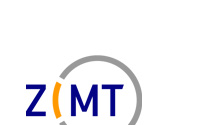|
| TechNote ID: 241910 |
Last Updated: April 15 2002 04:49 PM GMT |
Caution!The information in this TechNote is based upon certain assumptions, including product, operating system and platform versions. You can review this information in the
TechNote Summary portion of this document.
This document (241910) is provided subject to the disclaimer at the end of this document.
Symptom:
| The SuSe 7.x client installation process |
Solution:
NOTE: The existing VERITAS NetBackup binaries for Linux were compiled on the Intel architecture. NetBackup will not function on any Linux binaries installed on a non-Intel architecture (i.e., 390).
1. Make sure the master server and all media servers are patched to at least the NB_34_1 level.
2. Install the Linux binaries onto the SuSe Linux 7.1 system from the NetBackup 3.4 or NetBackup 3.4.1 Installation CD.
3. Install the NB_34_1.clients patch onto the SuSe 7.1 client. If the master server is NT/W2K, the patch will need to be installed manually. (The process is listed below).
4. Make appropriate edits to the /etc/inetd.conf, the /etc/inetd.d, and/or the /etc/xinetd.d start up files. The syntax is included below.
How to manually patch UNIX clients. (This pertains to step 3 above)
The NetBackup UNIX client software can be manually patched using the following procedure:
1. Obtain the NB_34_1.CLIENTS_237386.TAR patch and place it into a temporary directory on the UNIX client.
NOTE: NetBackup patches can be obtained from: http://support.veritas.com.
2. Next, go to Patches and Updates>NetBackup Products> NetBackup DataCenter.
3. Search for the patch in the list that appears.
For example,
NB_34_1.CLIENTS_237386.TAR.Z.
4. Uncompress the file using the UNIX compress command. This will automatically remove the .Z from the filename:
compress -d NB_34_1.CLIENTS_237368.tar.Z
5. Untar the file to the current directory:
tar xvf NB_34_1.CLIENTS_237368.tar
NOTE: The current client version and operating system can be verified by examining the version file:
cat /usr/openv/netbackup/bin/version
It will be necessary to change directory to the proper Linux client code that you just untared in the temporary directory. The Linux patch files will then need to be copied from the temporary patch directory to the corresponding /usr/openv/ directories:
cd ./usr/openv/netbackup/client/<hardware>/<operating system>
For example,
./usr/openv/netbackup/client/INTEL/RedHat
The client code can be copied using the following commands:
cp [btx]* /usr/openv/netbackup/bin
cp v[ao]* /usr/openv/bin
cp lib* /usr/openv/lib
cp version /usr/openv/netbackup/bin
NOTES:
Once the update is complete, the files and directories created in the temporary directory can be removed.
This procedure can also be used in an environment where the master server is an NT server and the clients are UNIX.
Configuring inetd.conf, xinetd.d or inetd.d (system start up files)
Redhat Linux 7.0 started using xinetd instead of inetd along with different file structures. The same principles remain regarding inetd. The file names have changed. The new file is called /etc/xinetd.conf, but this is not the file that needs to be changed. The correct process is to go to /etc/xinetd.d and create three separate files under this directory. They should be named bpcd, bpjava-msvc and vopied.
The three files should look following:
bpcd File
# description: BPCD server
service bpcd
{
disable = no
id = bpcd-stream
socket_type = stream
protocol = tcp
user = root
wait = no
server = /usr/openv/netbackup/bin/bpcd
}
bpjava-msvc File
# description: bpjava-msvc server
service bpjava-msvc
{
disable = no
id = bpjava-msvc-stream
socket_type = stream
protocol = tcp
user = root
wait = no
server = /usr/openv/netbackup/bin/bpjava-msvc
server_args = -transient
}
vopied File
# description: vopied server
service vopied
{
disable = no
id = vopied-stream
socket_type = stream
protocol = tcp
user = root
wait = no
server = /usr/openv/netbackup/bin/vopied
}
Restart inetd or xinetd
OR
Reboot the Linux client.
Verify that the bpcd process is in listen mode:
# netstat -a | grep bpcd
| TechNote Title: |
The SuSe 7.x client installation process |
| TechNote ID: |
241910 |
| Last Updated: |
April 15 2002 04:49 PM GMT |
| This information in this TechNote applies to: |
| Products: |
| NetBackup BusinesServer |
3.4, 3.4.1 |
| NetBackup DataCenter |
3.4, 3.4.1 |
|
| Subject: |
NetBackup BusinesServer - Application - Configuration
NetBackup BusinesServer - Application - Installation
NetBackup BusinesServer - Operating System - Configuration
NetBackup BusinesServer - Operating System - Installation
NetBackup DataCenter - Application - Configuration
NetBackup DataCenter - Application - Installation
NetBackup DataCenter - Operating System - Configuration
NetBackup DataCenter - Operating System - Installation
|
| Languages: |
English
|
| Operating Systems: |
|

VERITAS Software, 1600 Plymouth Street, Mountain View, California 94043
|
THE INFORMATION PROVIDED IN THE VERITAS SOFTWARE KNOWLEDGE BASE IS PROVIDED "AS IS" WITHOUT WARRANTY OF ANY KIND. VERITAS SOFTWARE DISCLAIMS ALL WARRANTIES, EITHER EXPRESS OR IMPLIED, INCLUDING THE WARRANTIES OF MERCHANTABILITY AND FITNESS FOR A PARTICULAR PURPOSE. IN NO EVENT SHALL VERITAS SOFTWARE OR ITS SUPPLIERS BE LIABLE FOR ANY DAMAGES WHATSOEVER INCLUDING DIRECT, INDIRECT, INCIDENTAL, CONSEQUENTIAL, LOSS OF BUSINESS PROFITS OR SPECIAL DAMAGES, EVEN IF VERITAS SOFTWARE OR ITS SUPPLIERS HAVE BEEN ADVISED OF THE POSSIBILITY OF SUCH DAMAGES. SOME STATES DO NOT ALLOW THE EXCLUSION OR LIMITATION OF LIABILITY FOR CONSEQUENTIAL OR INCIDENTAL DAMAGES SO THE FOREGOING LIMITATION MAY NOT APPLY.
|
|


